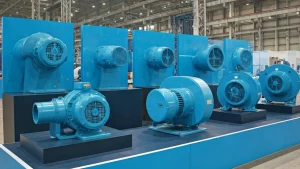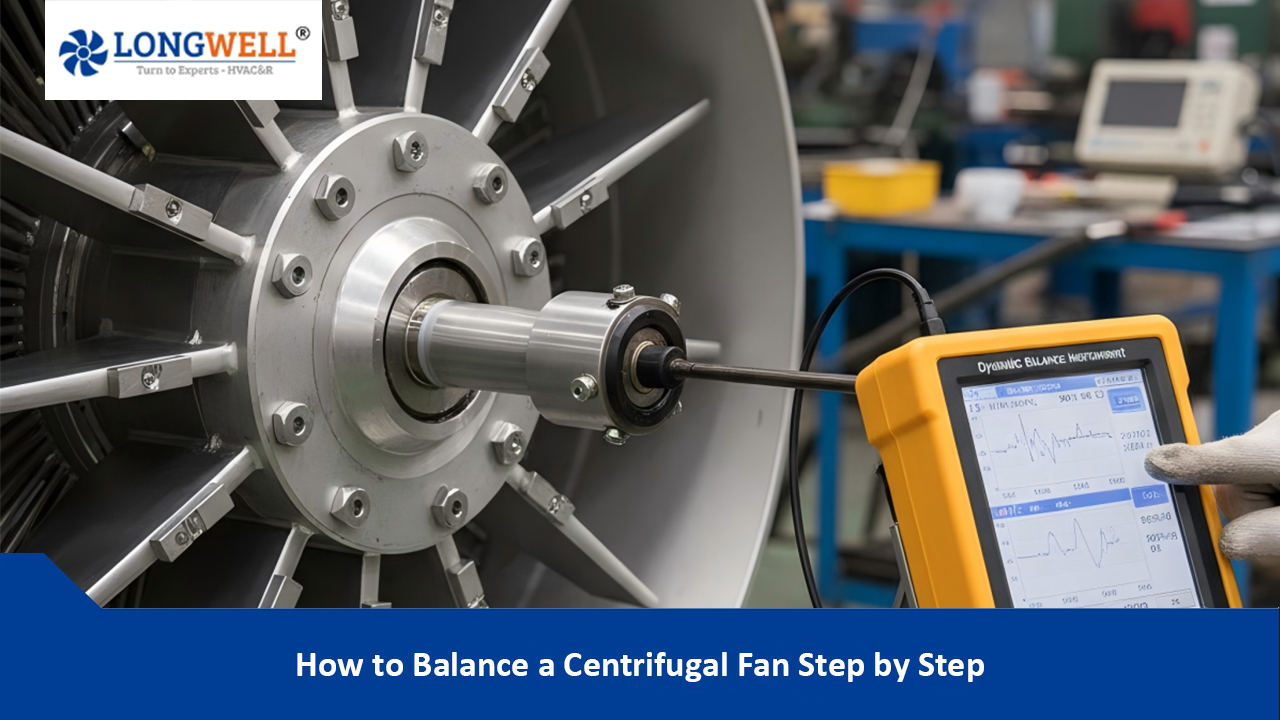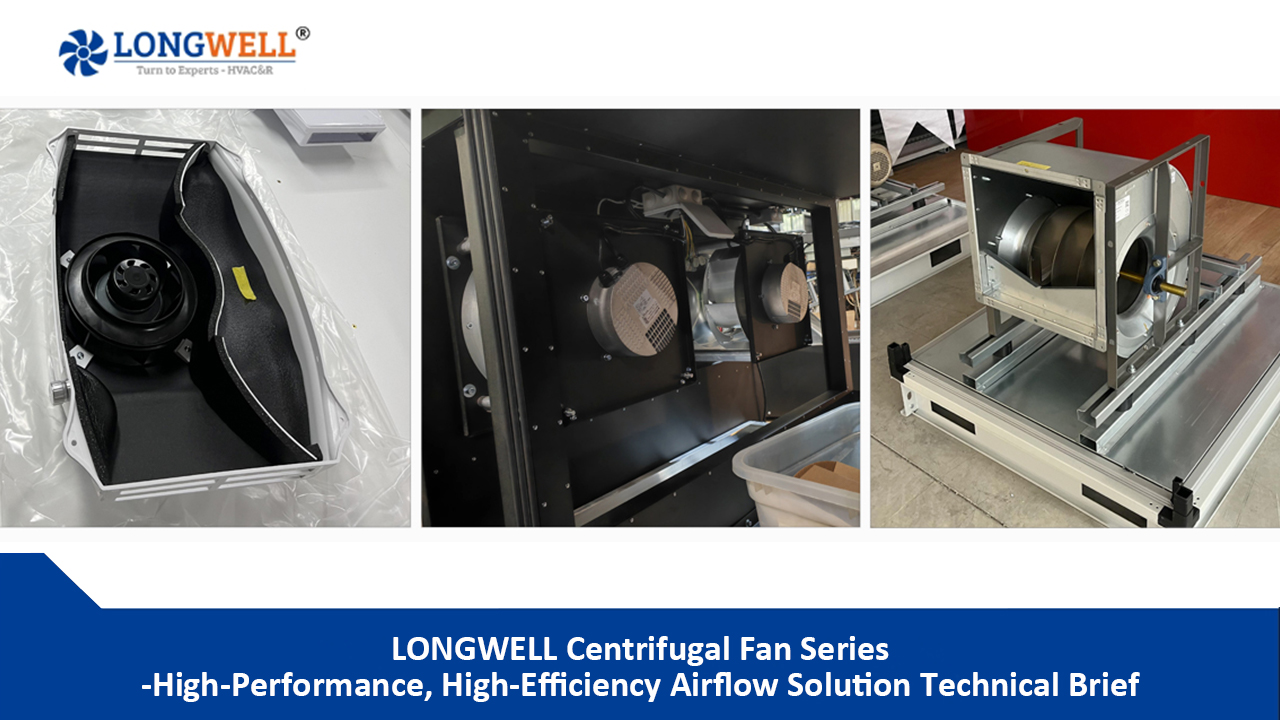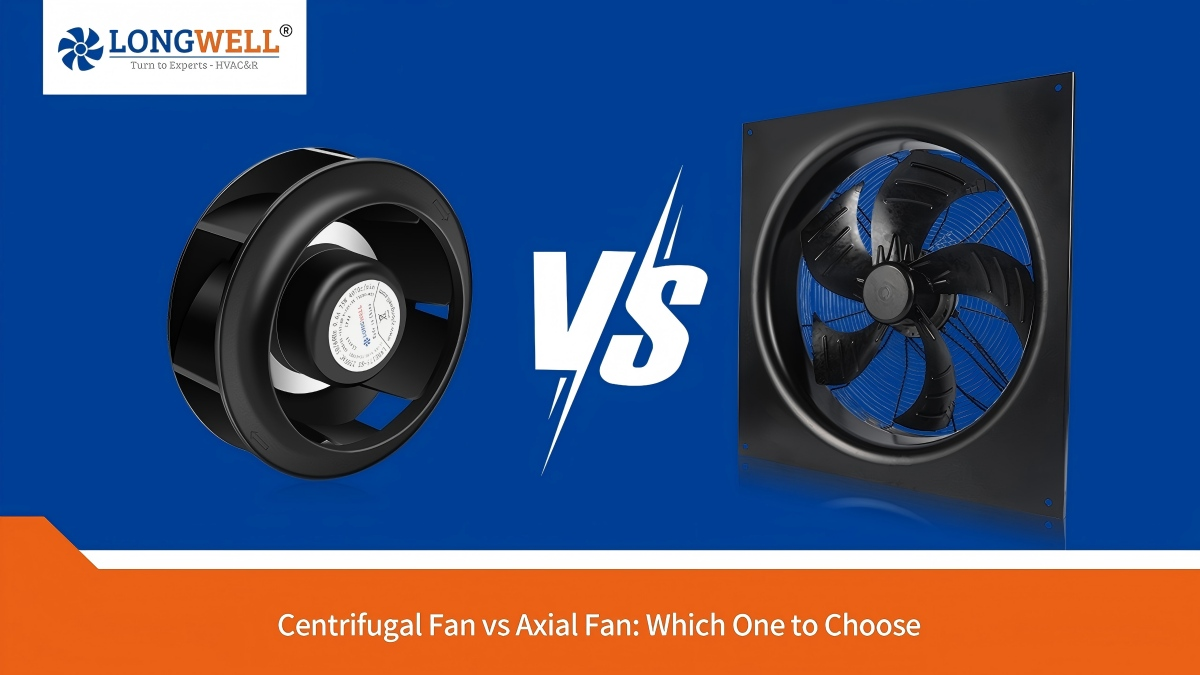
Key Highlights
- Air blowers are essential in many industries. They find use in places like manufacturing and environmental systems.
- This guide will cover the basics of air blowers. It will discuss different types, their uses, and how to take care of them.
- You will gain knowledge about the main parts, how air blowers operate, and what can affect their performance.
- You will discover why regular maintenance is important, as well as safety tips and how to resolve common issues.
- This complete guide gives useful advice on picking the right air blower for your needs.
Introduction
Air blowers are helpful in many industries and our daily lives. These machines use kinetic energy to create a steady flow of air or gas. They play a key role in tasks such as pneumatic conveying and cleaning wastewater. This guide will help you learn everything about air blowers. You will discover how they work, the types you can find, their uses, and the right way to maintain them.
Understanding the Basics of Air Blowers
Air blowers are tools that increase the pressure of air or gas. They manage how this air moves. First, they draw in air and then send it out at a higher pressure. This pressurized air can be used in various ways. It can produce a strong blast for cleaning or cooling, provide air for burning, or assist in moving materials.
Air blowers operate based on fluid dynamics. By understanding air pressure, volume, and speed, we can learn how these machines work well and efficiently.
Definition and Core Functions
An air blower is a device that increases the pressure of air or gas by making its space smaller. It works at a much lower pressure ratio compared to air equipment compressors. Usually, it operates under 15 pounds per square inch gauge (psig).
The air blower has three key jobs. It draws in air, compresses it, and sends it out. First, the blower draws air through an inlet. Next, a rotating impeller compresses the air inside. Finally, the compressed air goes out through an outlet and is ready to use. This process of intake, compression, and discharge keeps a steady flow of compressed air.
Historical Development and Technological Advancements
The concept of moving air is not recent. Long ago, people used tools like bellows and basic fans for jobs like forging and air circulation. The modern air blower started to take shape during the Industrial Revolution. People needed improved ways to move air for their work, and this had a big effect.
The first air blowers were mostly designed using centrifugal methods. Over time, these designs got better, making them more efficient and stronger. New materials and better impeller designs allowed blowers to last longer and perform better.
Recent technology, such as computational fluid dynamics (CFD), has changed how engineers design air blowers. CFD lets them visualize how air flows and how pressure works inside the blower. As a result, they can create blowers that use less energy and operate efficiently.
Types of Air Blowers
Air blowers, including rotary lobe blowers, also known as roots blowers, and compressed air blowers, are mainly divided by how they work and their pressure levels. Each type has its own features, benefits, and downsides. This means some work better for certain jobs. Knowing these differences is key to picking the right blower for what you need. Let’s look at the main types of air blowers: centrifugal blowers, positive displacement blowers, and high-speed blowers.
In this section, we will look closely at these types of air blowers. We will compare how they work, their advantages, and the best places to use them.
Centrifugal Blowers
Centrifugal blowers move air by pushing it out with centrifugal force. They have a spinning impeller inside a casing that is shaped like a spiral.
Here’s how they work:
- Air goes into the blower through the center of the impeller.
- The turning blades of the impeller give kinetic energy to the air and push it outwards.
- The volute casing gets wider inside. This increases the speed and makes higher pressure.
- At last, the pressurized air comes out through the outlet.
Centrifugal blowers create a smooth and steady flow of air. They are great for tasks that need constant pressure and different flow rates.
Positive Displacement Blowers
Positive displacement blowers work by drawing in a specific amount of air and releasing it through the outlet. They do this differently than centrifugal blowers, which are capable of moving large amounts of air quickly. Centrifugal blowers use centrifugal force. In contrast, positive displacement blowers use rotating lobes, gears, or screws to move the air.
There are two main kinds of positive displacement blowers:
- Lobe Blowers: These blowers have two lobes that turn in opposite directions. They trap air in pockets. As the lobes spin, they move air from the inlet to the outlet. This process helps keep the air flow steady.
- Rotary Screw Blowers: These blowers use two screws that spin together. They rotate to compress the air. The air is pushed along the length of the screws until it reaches the discharge point.
Positive displacement blowers are excellent for providing steady airflow. They do this well, even when the pressure changes in the system. This feature makes them perfect for jobs that need high pressure and a smooth air flow.
High-Speed Blowers
High-speed blowers, such as turbo blowers, are becoming more popular due to their high speed energy efficiency and their ability to be used in various industrial applications. Their compact design makes them even more attractive. They operate by using fast-spinning impellers and built-in motors to generate powerful airflows.
Turbo blowers spin much faster than regular blowers. This fast speed allows them to move air more quickly and improves flow rates. Because they rotate quickly, they must be balanced properly and need special bearings. This method reduces vibrations and helps them last longer.
These blowers are usually needed for tasks that require large volumes of air at normal pressures. A common use is for aeration in wastewater treatment plants and in moving materials.
How Air Blowers Function
To understand how air blowers work, you need to look at their key parts and how air moves. No matter what type of air blower it is, they all follow the same basic rules of fluid movement. These rules help air blowers create a steady flow of pressurized air for different uses. This part will explore the main parts and how they help air move smoothly and effectively.
Key Components and Assembly
Air blowers have parts that work together. They pull in air, compress it, and push it out. Here are the main parts:
- Blower Housing: This outer part holds everything together. It keeps its shape and allows air to flow properly.
- Rotating Impeller (Centrifugal Blowers) or Lobes/Screws (Positive Displacement Blowers): These parts of the blower, including the fan wheel, are very important. They push energy into the air and create pressure.
- Inlet and Outlet Ports: These openings let air come in and go out.
- Drive Shaft: This links the motor to the impeller or lobes. It moves energy along.
- Bearings: These reduce friction between moving parts, helping everything to run smoothly.
Different types of blowers can arrange their parts in several ways. Still, they all work to create pressure differences. This helps them move air in an efficient way.
The Mechanism of Air Movement
Air movement in a blower starts when the impeller or lobes spin. As the impeller rotates or the lobes shift, they make low pressure at the inlet and high pressure at the outlet. This change in pressure pulls air into the blower through the inlet port.
In centrifugal blowers, the speed of the impeller is important for how much air is moved and the speed of the air pressure it creates. When the impeller spins faster, the air moves faster too. This increase raises the air pressure and speed. Positive displacement blowers operate in another way. They move air by trapping a specific volume of air and forcing it through the system. The speed of the rotating lobes or screws affects the flow rate. A higher speed means more air moves in less time.
Understanding the basic ideas about air movement is important. This knowledge helps you pick the best blower. It also makes the blower work better for different tasks.
Energy Sources and Power Regulation
Air blowers usually work with electric motors. However, some industrial versions use gas engines. The motor’s power determines how much air the blower can move. It also affects the pressure the blower can make.
Regulating power is important to manage how the blower works. It allows the blower to run well within its ideal range. Many blowers now come with variable frequency drives (VFDs). This feature helps operators to adjust the motor speed easily. By changing the speed, they can connect the blower’s output to what each job requires.
Energy efficiency matters when you use blowers. Efficient blowers use less energy but provide strong airflow and pressure. To improve energy efficiency, choose the right size for the blower, design the impeller properly, and keep it well-maintained. This practice is an effective solution to help cut down on operational costs.
Applications of Air Blowers in Various Industries
Air blowers are very important in many industries because they save energy, especially in reducing energy consumption. They help with several jobs, like making things and keeping the environment safe. Their power comes from giving a steady and controlled flow of pressurized air. This makes them useful in many different ways. Let’s look at how air blowers are used in various industries:
Usage in Manufacturing and Production
Air blowers are very important in manufacturing. They help with various tasks, such as:
- Material Handling: Blowers help move materials. They use air pressure to push powders, granules, and small items through pipes. This way is cleaner and more efficient than using machines like conveyors.
- Drying and Cooling: Blowers move air to dry things. They can remove moisture from new paint or cleaned items. They also cool machines or products by getting rid of extra heat.
- Packaging: Blowers are important in packaging lines. They create a vacuum to seal bags or inflate packaging. This keeps fragile items safe during shipping.
Air blowers are essential for keeping manufacturing moving smoothly and effectively. They are known for their high efficiency and reliability.
Role in Environmental Systems
Aeration Processes: Blowers push clean air into aeration tanks. This brings in oxygen. The oxygen supports microorganisms that break down organic waste in the water. This process is key for good wastewater treatment and helps keep the water clean.
- Aeration Processes: Blowers bring clean air into aeration tanks. This adds oxygen, which helps tiny organisms break down organic waste in the water, producing byproducts that include carbon dioxide. This process is important for good wastewater treatment and keeping water clean.
- Odor Control: In treatment plants and areas with bad smells, blowers spread agents that control odors by delivering high volumes of air. This helps reduce pollution and improves air quality nearby.
- Flue Gas Desulfurization: Blowers are used in power plants and industries to take sulfur dioxide out of flue gases. This helps lower air pollution and follow environmental laws.
Air blowers are very important for keeping our air and water clean. They help with these processes, which makes our environment better.
Applications in Consumer Products
Air blowers are in many products we use every day. They make our lives easier and more comfortable.
- HVAC Systems: Blowers are key parts of heating, ventilation, and air conditioning (HVAC) systems. They move air in homes and buildings to keep the temperature nice.
- Vacuum Cleaners: Blowers create suction in vacuum cleaners. This helps them lift dust and dirt from floors and carpets.
- Hair Dryers and Hand Dryers: These gadgets use blowers to push out hot or regular air to dry hair or hands.
- Air Knife Systems: Blowers are also found in air knife systems. These systems make a quick, thin stream of air. They help clean, dry, or cool items on conveyor belts.
These examples show how air blower technology improves the function and performance of many different consumer products.
Maintenance and Safety Procedures
Keeping air blowers in good shape and safe is very important. This is especially true in factories, where any downtime can slow down production. Taking care of these machines and following safety rules can make them last longer and prevent accidents. By being proactive about maintenance and focusing on safety, companies can run smoothly and protect their workers. Here are some key tips for maintenance and safety rules:
Routine Maintenance Tips
Regular care is important for good blower performance and a long lifespan. Here are some key tasks you should do:
- Inspect Air Filters: Dirty filters can block airflow. This lowers efficiency and can harm the blower. Check, clean, or change filters often to keep the airflow strong.
- Lubricate Bearings: Proper lubrication can reduce wear and friction on bearings. This makes them last longer. Follow the manufacturer’s directions on how often to grease and what type to use.
- Check Belts and Pulleys (if applicable): Look for damage on belts and ensure they are tight. Worn or loose belts can slip, which hurts efficiency.
By adding these checks to your maintenance plan, businesses can spot problems early. This helps to avoid expensive downtime and can make their air blowers last longer.
Safety Guidelines and Best Practices
Using air blowers safely means following safety rules and best practices. Here are some tips to keep in mind:
- Lockout/Tagout Procedures: Before starting any repairs or maintenance, turn off the power to the blower and lock it. This prevents it from starting by mistake.
- Wear Appropriate PPE: Always wear personal protective equipment (PPE). This includes eye protection, hearing protection, and gloves when you work around air blowers.
- Never Direct Airflow Towards Yourself or Others: Do not aim the pressurized air at yourself or other people. It can cause serious harm. Always make sure the air blows away from people.
By focusing on safety and following these rules, businesses can make their workplaces safer. This will reduce the chance of accidents.
Troubleshooting Common Issues
Air blowers can still face problems, even when you take care of them. Here is a simple guide to help you fix the usual issues:
Problem: Lower Airflow
Possible Causes: Clogged filters, damaged impeller blades, loose belts, or faulty bearings.
Solution: Inspect the filters. Clean or replace them if needed. Examine the impeller blades and get new ones if they are worn out. Tighten or replace the belts. Look at the bearings and add oil or change them if needed.
Problem: A strange noise or vibration
Possible Reasons: A part that is unbalanced, bearings that are worn out, loose pieces, or dirt in the blower housing.
Solution: Check to see if the impeller is balanced. Inspect the bearings and replace them if you need to. Tighten any loose bolts and clean the blower housing.
Problem: Overheating
Potential Causes: The blower might be working too hard, there could be poor airflow, the motor might be broken, or there could be damaged bearings.
Solution: Follow the instructions for using the blower, improve the airflow around it, and check the motor for repairs if needed.
When businesses fix these problems quickly, they can reduce downtime. This makes everything work better.
Choosing the Right Air Blower
Choosing the right air blower is important. You should consider several factors to make the best choice. Taking the time to do this will help you get good performance and save money. A quality air blower makes sure your system runs efficiently and uses less energy.
Factors to Consider When Selecting a Blower
When picking an air blower, you should think about a few important things. These tips will help you find the right one for you:
- Airflow Rate: Figure out how much air you need for your job. It is usually listed in cubic feet per minute (CFM) or cubic meters per hour (m³/h).
- Pressure Requirement: Find out the pressure you need. This is measured in pounds per square inch gauge (psig).
- Power Source Availability: Identify which power source you can use, like single-phase or three-phase electricity.
- Operating Environment: Think about things like temperature, humidity, and dust in the area.
- Noise Level: Learn what noise level is acceptable for your needs, especially in places where noise is important.
Taking a close look at these factors will help you choose the best blower for your needs.
Comparison of Different Blower Types
| Type of Blower | Advantages | Disadvantages | Applications |
|---|---|---|---|
| Centrifugal Blowers include multistage centrifugal blowers, which are known for their quiet operation, low maintenance, and compact design. | Quiet operation, low maintenance, compact design | Lower pressure capabilities, not suitable for high-pressure applications | HVAC systems, combustion air supply, drying and cooling applications |
| Positive Displacement Blowers (Lobe & Screw) | High pressure capabilities, constant airflow even with pressure fluctuations | Higher noise levels, potential for pulsations in airflow | Wastewater treatment, pneumatic conveying, material handling |
| High-Speed Turbo Blowers | High efficiency, compact design, low noise levels | Higher initial cost, more complex maintenance | Large-scale aeration, industrial processes requiring large volumes of air |
This table lists the key features, benefits, and uses of different types of blowers. It will help you select the best one.
Conclusion
In conclusion, it’s important to know how air blowers work. This understanding helps many industries. When you learn their main functions and the latest technologies, you can pick the right blower. A good choice can improve efficiency and performance. Whether you choose centrifugal blowers or positive displacement blowers, both are essential for air movement systems. Remember to follow maintenance and safety rules to keep them working correctly and safely. By learning about air blowers, you can make your processes better, support environmental systems, and boost productivity in different areas. If you need help choosing the best air blower for your needs, talk to industry experts for advice and solutions.
Frequently Asked Questions
What is the lifespan of a typical air blower?
The life of a regular air blower can be different based on its type, how you use it, and how you take care of it. If you maintain your blower well, it can last 15 to 20 years or even longer. Taking care of your blower is crucial to help it last longer.
How does environmental regulation impact blower technology?
Businesses must follow environmental rules. These rules are pushing companies to make blowers that use less energy and create less pollution. Companies are always trying to make blower technology better to meet these standards. Because of this, we now have blowers that are quieter and more eco-friendly. These rules are a big reason for the progress in blower technology.



